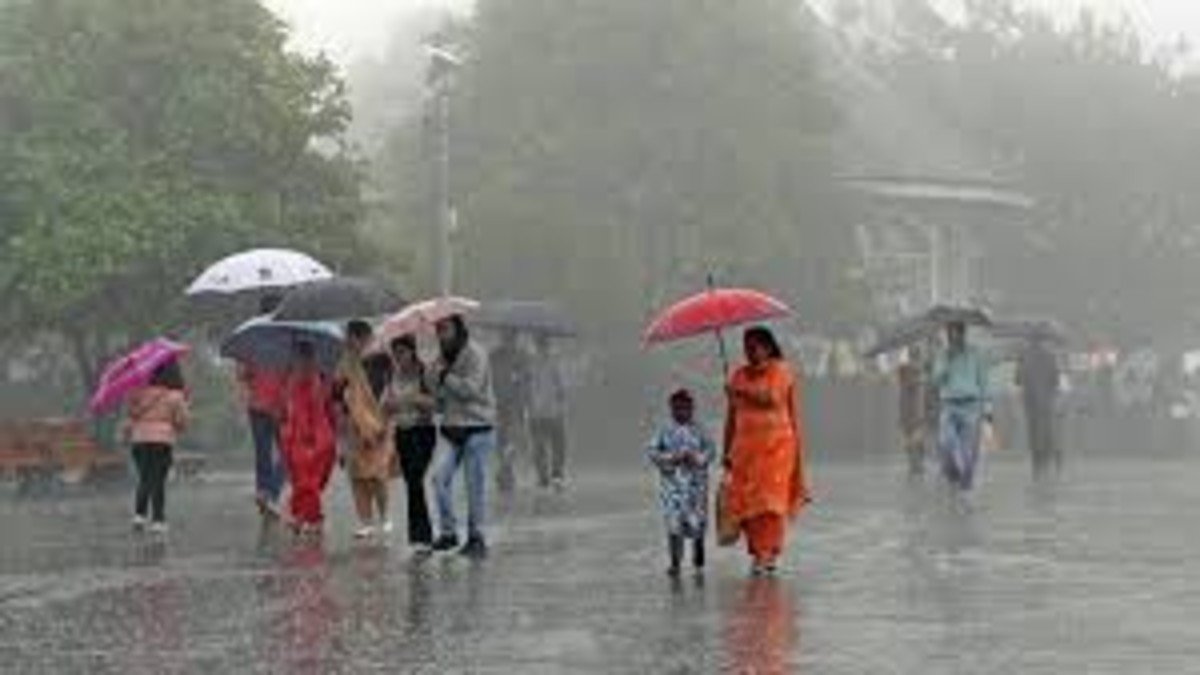
India is currently bracing for intense weather as the India Meteorological Department (IMD) has issued severe rainfall alerts across multiple regions, signaling potential disruptions and the need for heightened preparedness. With the southwest monsoon in full swing, several states are experiencing heavy to extremely heavy rainfall, prompting red and orange alerts in various districts. Here’s a clear and concise breakdown of the situation, its impacts, and what residents can do to stay safe.
What’s Happening?

The southwest monsoon, which typically brings 80% of India’s annual rainfall between June and September, has been particularly active in 2025. Recent updates from the IMD indicate heavy to very heavy rainfall is expected over Northwest India, Madhya Pradesh, Gujarat, and the Konkan-Goa region from June 22 to June 26, 2025, with isolated areas in Gujarat and Madhya Pradesh likely to see extremely heavy rainfall (over 200 mm in 24 hours).
In southern India, coastal Karnataka, Kerala, and parts of Tamil Nadu are also under severe weather warnings. For instance, Dakshina Kannada in Karnataka has faced relentless rains, leading to flooding and disruptions, while Kerala’s northern districts like Kasaragod and Kannur are under red alerts due to intense monsoon showers. Delhi, too, has been hit hard, recording its wettest May since 1901 with 185 mm of rainfall, causing significant waterlogging and infrastructure challenges.
The early onset of the monsoon in Maharashtra, arriving a week ahead of schedule, has led to severe waterlogging in Mumbai, affecting transport, rail, and flight services. Red alerts have also been issued for Thane, Ratnagiri, and Raigad districts. Additionally, posts on X highlight moderate to heavy rain expected in parts of Rajasthan, Gujarat, Madhya Pradesh, and Jharkhand in the next 24 hours, underscoring the widespread nature of this weather event.
Why Is This Happening?
The current rainfall patterns are driven by a combination of factors. The southwest monsoon’s early arrival, the formation of low-pressure systems over regions like the Konkan and Bay of Bengal, and interactions between monsoonal winds and western disturbances are intensifying rainfall across the country. Experts also point to broader climatic shifts, with studies noting a threefold increase in widespread extreme rain events over central India since 1950, even as overall monsoon rainfall decreases. This results in longer dry spells punctuated by short, intense downpours, increasing the risk of flooding.
Climate change is exacerbating these erratic weather patterns, making unseasonal rains and flash floods more frequent. Urban areas like Mumbai, Delhi, and Bengaluru are particularly vulnerable due to outdated drainage systems and rapid urbanization, which have encroached upon natural water bodies and drainage channels.
Impacts on Daily Life

The heavy rainfall has caused significant disruptions across India:
- Mumbai: Severe waterlogging has brought the city to a standstill, with roads turning into rivers and metro services disrupted. A red alert was issued after 106 mm of rain fell in just 24 hours.
- Kerala: Tourist spots like Munnar’s Mattupetty Dam and all centers in Kasaragod and Kannur are closed, with activities like boating and trekking banned until conditions improve.
- Karnataka: Coastal districts like Dakshina Kannada are flooded, with schools closed and disaster response teams deployed.
- Delhi: Heavy rains have led to waterlogging, traffic chaos, and damage to infrastructure, including a partial roof collapse at the Indira Gandhi International Airport.
- Northeast India: Assam and other states are grappling with floods and landslides, with at least 30 deaths reported recently.
These disruptions have affected millions, damaging crops, infrastructure, and homes while posing risks to public safety. Farmers, particularly in Maharashtra, are facing losses due to damaged crops like onions, while urban residents deal with traffic delays and power outages.
What Can You Do?
To stay safe during this period of severe rainfall, consider the following precautions:
- Stay Informed: Monitor updates from the IMD and local authorities via their websites or trusted news sources. Follow weather alerts on social media for real-time updates.
- Avoid Travel: Limit non-essential travel, especially in areas under red or orange alerts. If travel is unavoidable, check road and transport conditions in advance.
- Prepare for Flooding: If you live in a flood-prone area, elevate valuables, keep emergency supplies ready, and know the nearest safe evacuation routes.
- Stay Indoors During Storms: Avoid open areas during thunderstorms to reduce the risk of lightning strikes or electrocution.
- Support Community Efforts: Check on vulnerable neighbors and follow local disaster management advisories to assist with rescue or relief efforts.
Looking Ahead
The IMD forecasts that heavy rainfall will continue in several regions through late June 2025, with the monsoon expected to intensify further. Authorities are urging residents to remain vigilant and prepared for potential flooding and landslides, especially in coastal and hilly areas. Long-term solutions, such as improved urban planning, modernized drainage systems, and community-driven flood preparedness, are critical to mitigating the impact of such extreme weather events.
As India navigates this challenging monsoon season, staying informed and proactive can make all the difference. Keep an eye on local weather updates and prioritize safety to weather the storm.
Last Updated on: Monday, June 23, 2025 3:03 pm by Rishi Akkaraju | Published by: Rishi Akkaraju on Monday, June 23, 2025 3:03 pm | News Categories: India

Leave a Reply